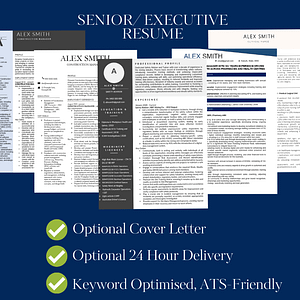Job interviews can be nerve-wracking experiences for many people. With proper preparation, you can not only help calm your nerves, you can increase your chances of success. Many people struggle to know where to start.
That’s why we created this handy Interview Coaching Worksheet, to help guide you through the job interview preparation process. Use our worksheet and follow these five steps to ensure you are fully prepared for your next job interview:
1. Review the Job Ad and Jot Down Key Skills/ Experience Required in the Red Column
2. Brainstorm Examples of How You Demonstrate Each Point in the Green Column
3. Prepare Your Answers for ‘Common Interview Questions’ Using Page 2 of the Worksheet
4. Practice Your Answers (Referring to Our Worksheet)
5. Plan Ahead to Manage Your Nerves
In most cases, you will be able to take this interview coaching worksheet into the job interview with you. You can refer to the important examples you have developed as needed. This worksheet has been designed to help you feel prepared and ready to tackle whatever the interviewers throw at you.
Read on to discover how to use this worksheet:
1. Review the Job Ad and Jot Down Key Skills/ Experience Required in the Red Column
After you have downloaded our Interview Coaching Worksheet, you should look for any points listed under ‘Key Requirements’, ‘About You’ or similar sections. These sections outline what sort of person/ experience the role requires. Usually, there will be about 5-10 of these points.
You can write these directly into the red column of our worksheet. You should break down long-winded sentences into multiple points. For example, if they ask for: “Concise written and verbal communication skills, including professional telephone manner”, you can break this into two points – written skills in one row, and verbal skills in the second row.
2. Brainstorm Examples of How You Demonstrate Each Point in the Green Column
Using our worksheet, write down examples in the green column of how you can demonstrate each point they are looking for. Use the SAO format i.e.
i.e. Situation, Action, Outcome: Situation = what role were you in? Action = what did you do? Outcome = what was the result?
For example:
To address the written communication skills point:
Situation: Role as Admin Assistant with X Organisation
Action: Took initiative to document procedures for process for managing office consumables. Put this into a Word document, sent to relevant staff and put on intranet.
Outcome: Relevant staff understood how to manage office consumables. More consistency across team. New starters could access my document and understand what was required.
Or, to address the requirement for strong verbal communication skills (on the phone), an example could be:
Situation: Role as Receptionist with Z Organisation
Action: Received a high number of calls daily (approx. 50) from customers and suppliers, effectively routed callers and took and delivered messages as per requirements.
Outcome: High volume of calls were taken and responded to professionally and effectively. Customers satisfied. Management satisfied I was often praised for my professionalism.
Once you have completed these sections, you will have a list of strong examples that you can refer to, whatever questions the interviewer asks. This is what they really want to hear from you.
So, for example, if they ask you: “Tell me about a time when you faced a difficult situation at work and how you handled it,”, you could refer to your written communication example, and explain that previously, office consumables were not being managed effectively, and that staff were often in conflict about how to manage this task (i.e. a difficult situation), and then explain how you fixed it.
Another example could be if the interviewer asks you to “Describe a situation where you had to work in a team and how you contributed to its success.” You could refer to your verbal communication example. In fact, you can use these examples for any question the interviewer asks, depending on how you frame your answer.
3. Prepare Your Answers for ‘Common Interview Questions’
Use page 2 of our Interview Coaching worksheet to develop some answers for ‘common interview questions’ you may be asked.
4. Practice Your Examples and Answers
Practice talking about each of your examples and answers with a friend or family member, or even record yourself to review your performance.
Pay attention to your tone, body language, and overall confidence. Practice speaking clearly and concisely, and avoid rambling or giving vague answers.
5. Plan Ahead to Manage Your Nerves
Plan what you will wear in advance – dress professionally, in appropriate attire for the industry and company culture.
Plan your journey in advance, considering transportation and timing to arrive on time.
Manage your nerves by practicing deep breathing, positive self-talk, and visualising a successful interview.
Would you like to discuss 1:1 interview coaching with one of our professional coaches? View our job interview packages or contact us to discuss your needs.






